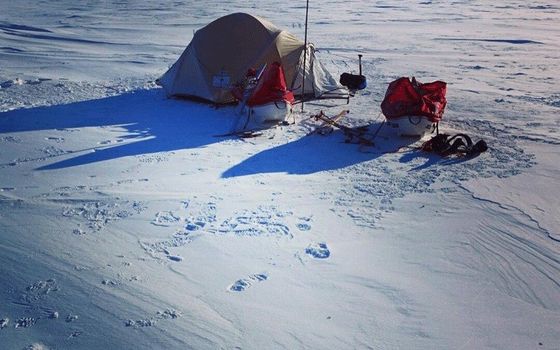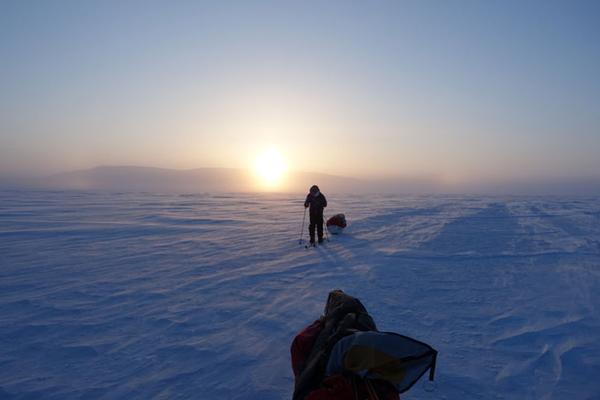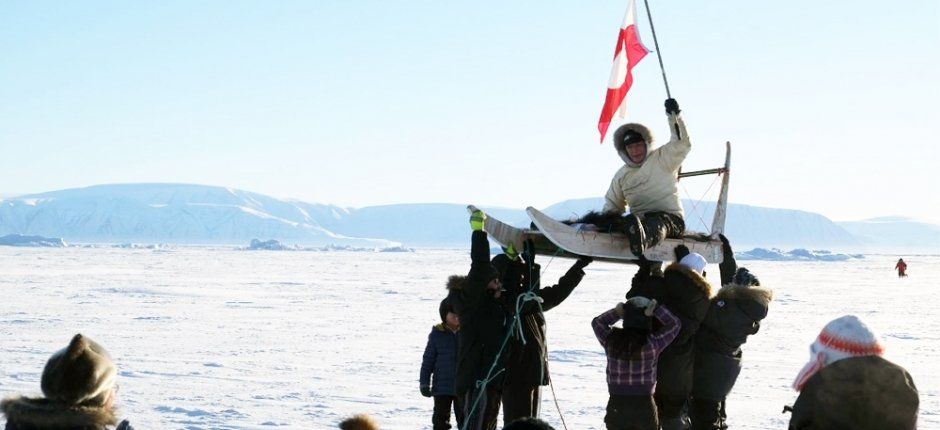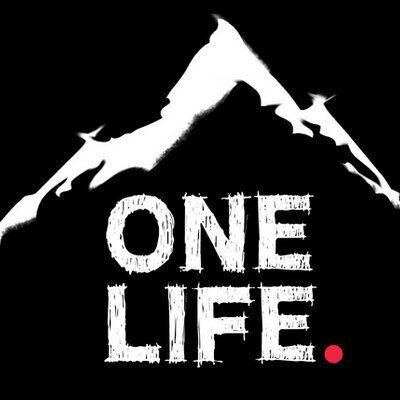The Haig-Thomas Expedition
In February, 2015, Ed Cooper and Alec Greenwell set out to re-trace the 1500-mile journey of British geographer and ornithologist, David Haig-Thomas seventy years after his well-documented trek through the hazardous Arctic. Through learning the language and adopting local methods of clothing and travel, Haig-Thomas was able to complete this incredible journey with his Inuit guide Nookap completely unsupported. The record of this epic journey is recorded in his fascinating book ‘Tracks in the Snow’.
Who are you
Ed Cooper from The Haig-Thomas Expedition 2015
The Challenge
Qaanaaq, Greenland to Haig-Thomas Island, Nunavut
How long did it take
3 months (24 days trek)
How much did it cost
£45,000 + equipment + supplies + training
What was the distance
450km
Who was the organiser
Ed Cooper / Alec Greenwell

What was it like?
Phase 1:
It takes around 3 days to get up to Qaanaaq, Greenland from the UK. Direct flights go from Iceland and Denmark, however I have only flown via Denmark (flights as of May 2015 showed little difference in price) so I will provide an overview of that route. You will need to get yourself to Copenhagen and from there Air Greenland will fly you to Kangerlussuaq Airport, which used to be one of the US Air Forces main bases in Greenland but is now little more than a transfer ground for passengers moving in to smaller Dash 8 aircraft for onward flights around the country.
The Dash 8 will then take you on to Ilulissat, a world heritage site, for an enforced over-night stay (which is hardly unpleasant!) before you can make your way up the country the following morning, firstly to Upernivik and finally Qaanaaq. The stops are almost bus like in nature so don’t be put off by the many destinations en route.
One thing to be prepared for is the affect that weather will have on your timetable, I have been delayed for a week before due to low cloud which can impact onward flights etc… Air Greenland will pay for hotel and food to compensate the extended stay which isn’t so bad if you have made sure you have nowhere to be!

Arriving in Qaanaaq in February, the team’s primary aim was to chronicle modern hunting techniques and highlight differences between what we saw and what was documented in David Haig-Thomas’ 1938 account of the area in his book ‘Tracks in the Snow’ which was the inspiration behind the trip. We also intended to train, acclimatise to the environment and get used to our equipment in the 2 months before we left on the trekking phase of the expedition. Working closely with the local hunters to learn about their methods also provided us with valuable insight in to surviving up there.
We put this knowledge in to practice on some of our many training runs which would provide interesting expeditions in their own right with a number of famous explorers having operated in the region. One training piece took us to Peary’s Anniversary Camp which lies around 35km East of Qaanaaq town.
If you are looking to stay in Qaanaaq for a few days then Hans Jensen at Hotel Qaanaaq can help you out and for longer stays he can put you in touch with rental accommodation in the town. There is also a hospital at the top of the town with a dentist and you will find a large supermarket at the bottom that although deliriously expensive, will help keep finances in check.

Phase 2:
This involved retracing the 1938 route of David Haig-Thomas from Qaanaaq across Ellesmere Island / Axel Heiberg Island and to Haig-Thomas Island. Unlike our predecessor, the crossing of Smith Sound is no longer plausible for a number of reasons which I won’t go in to here. The net result was that we had to charter a Twin Otter from Kenn Borek Air in Canada to fly us to Eureka Weather Station where we would begin our trek to the island.
Not many people go to where we were heading, KB Air is without competitors with First Air ceasing activities in the region and Air Greenland helicopter ranges being too limited for a drop off on Ellesmere. These factors helped produce a gaping hole where the majority of our funding quickly descended in to! We were lucky to be joined last minute by a well-known wildlife photographer and trusty cameraman (both sadly med-evac shortly afterwards due to cold injuries), who contributed to the flight.
There was a final kick in the teeth before we left as bad weather would cause a day’s delay to the journey. We could try for either Eureka which was currently showing zero visibility or else go for Borek’s base in Resolute Bay and lie low until the weather cleared. (It was one of the only times I can remember boarding a plane and not knowing where I was going!)
We ended up in Resolute, the delay induced another hit to expedition finances but the main thing was that after four years of planning, we were off!
Resolute is an interesting place, being seemingly less populated than Qaanaaq, it felt very remote but the one plus was the fact that they serve fresh fruit in the shop there, something we hadn’t seen for a few months by this time and were positively craving.
The following lunch time we were heading through beautifully clear skies on our way to Eureka Weather Station, there were some stunning views and the once in a lifetime experience of the pilots diving down on Musk Ox and Caribou to take a closer look. Arriving at Eureka was a surreal experience, we were incredibly well looked after and had the pleasure of being invited to dinner at the station. Thus began the first of two large shocks that evening, firstly that the station is an oasis of modern luxury. It boasts possibly the finest games room north of the Arctic Circle and we were treated to the finest meal we had since leaving the UK.
The second shock was less luxurious but utterly incredible. Leaving the warmth to venture out on to the ice and set up camp, we looked up and discovered that we were completely surrounded by Arctic wolves. Although worried at first, they were only interested and not aggressive in the least and we were able to take some fantastic photographs.
The next 24 days took us through some stunning landscapes, tested our ability to survive to the full and showed us the perils of modern communications (or rather our reliance on it). What was most spectacular about where we were, in my mind, was the non-existence of any sign of human activity and the abundance of wildlife that followed this. We saw polar bear on almost a daily occurrence, Arctic fox’s would trot directly towards us and then dance away and Musk Ox patrolled the high summits of the surrounding mountains.
The wildlife experience on its own would merit the high cost of travel to the region. We reached the island at the end of April and after some frantic searching to find the cairn that David left a note under (sadly we were unable to locate it) we were picked up by Kenn Borek and headed back to Qaanaaq for some much needed R&R

How should you train
A good all round level of fitness should set you up for long trips of sledge pulling. A focus on building general strength levels will also help lifting the sledge over rougher parts
.
Any other useful hints / links
Weather - Your timetable is dictated by the weather so factor this in to any timing and be prepared for delays
Logistics - Air transport is incredibly expensive and most carriers in the UK have very little experience shipping to Greenland so try and send things early so you have time to resolve any issues that may arise as a result of this
Season – There is a significant increase in temperature towards the end of April, the sea ice in the area is still good through May (2015 ice charts) so travelling later on in the season would have been more comfortable allowing us to enjoy the landscape/wildlife rather than focus on survival
A more in depth overview of the expedition can be found on our website
OR
Read David Haig-Thomas book ‘Tracks in the Snow’ available on Amazon.co.uk
View More Articles
Services List
-
Land This is a text area. Writing in paragraphs lets your visitor find what they are looking for quickly and easily. Edit the text in the list editor.
Land -
Water Expeditions This is a text area. Writing in paragraphs lets your visitor find what they are looking for quickly and easily. Edit the text in the list editor.
Water Expeditions -
Ice Expeditions This is a text area. Writing in paragraphs lets your visitor find what they are looking for quickly and easily. Edit the text in the list editor.
Ice Expeditions
